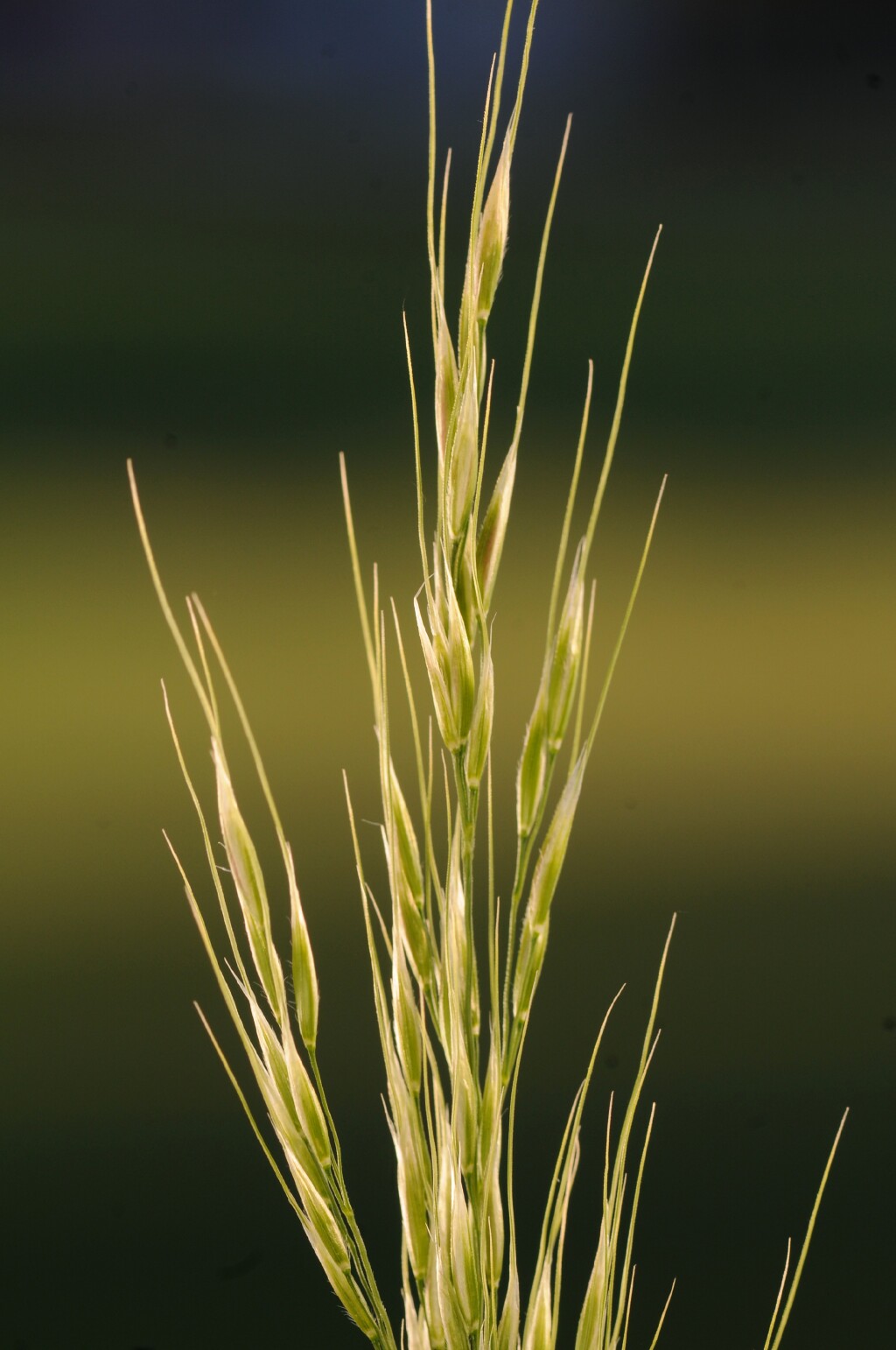Amelichloa caudata
(Trin.) Arriaga & BarkworthDensely tufted perennial, culms erect, to c. 0.8 m high but often shorter and overtopped by foliage, nodes glabrous. Leaves glabrous; blade weakly or strongly inrolled, to 80 cm long and 3 mm broad; ligule ciliate to 2 mm long. Inflorescence a loose but narrow panicle to 25 cm long. Glumes 6–9 mm long, usually purplish, acuminate, subequal; lemma 4–6 mm long, purplish at maturity, granular, with white hairs near the base, along the midrib and margins; coma sparse, 0.5–1.5 mm long; callus rudimentary, not pointed; awn twice bent, 10–20 mm long, 3–4 mm to the first bend, scabrous; palea subequal to lemma with a band of hairs down the centre. Flowers Nov.–Dec.
MuM, Wim, VVP, VRiv, GipP, Gold, HSF. Als naturalised NSW, Tas. Apparently a recent introduction to Victoria, first collected in 1987. Most infestations are from pasture and roadsides in the Clunes, Talbot, Maryborough, and Dunolly-Castlemaine districts, but also recorded from Swan Hill, North Coburg and Wangaratta. Unpalatable to stock.
The presence of cleistogenes within the leaf-sheaths limits the effectiveness of normal methods of control (e.g. slashing or burning) and as a result this species has the potential to infest vast tracts of pasture in the drier agricultural districts.
Walsh, N.G. (1994). Poaceae. In: Walsh, N.G.; Entwisle, T.J., Flora of Victoria Vol. 2, Ferns and Allied Plants, Conifers and Monocotyledons, pp. 356–627. Inkata Press, Melbourne.
 Spinning
Spinning

